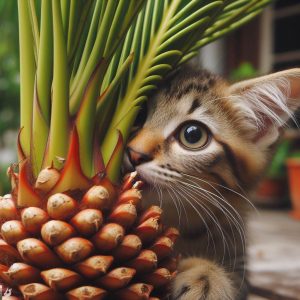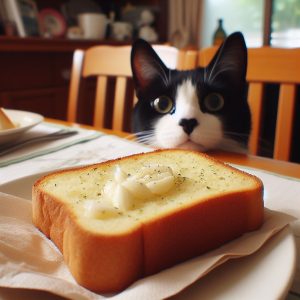Bringing home a new kitten is one of life’s greatest joys. As you watch your fuzzy little furball grow, one of your top questions will be “when do kittens start eating food and drinking water?” Getting kitten weaning right ensures your new friend grows into a healthy, well-adjusted cat.
In this guide, you’ll discover everything you need to know about weaning kittens onto solid food and water. From timing their first tastes to picking the perfect kitten food and bowls, you’ll find tips to make weaning a breeze.
I’ll also answer common questions new cat parents have about transitioning kittens from nursing to independent feeding and drinking. Read on to learn how to set your kitten up for weaning success!
When Kittens Start Nursing and Why Milk is Essential
Let’s start from the very beginning – a kitten’s first sips of milk from mom.
Kittens begin nursing within hours of birth. Mother cat’s milk provides the antibodies and nutrition newborns need to stay healthy and grow.
For the first 1-2 weeks of life, kittens get complete nourishment from nursing. They have limited mobility and nurse frequently, encouraging milk production.
By 2-3 weeks old, kittens are still nursing but starting to explore solid foods. Mother’s milk remains the primary nutrition source until kittens are 6-8 weeks old.
Weaning is the process of gradually transitioning kittens from nursing to eating solid food independently. Full weaning typically occurs between 8-12 weeks of age.
Now let’s go over the signals that your kitten is ready to add solid foods and water into the mix…
Signs Your Kitten is Ready for Solid Foods and Independent Drinking
As your kitten grows, their nutritional needs change. Here are signs to look for:
- 4 weeks: Kittens develop teeth and chewing instincts.
- 5-6 weeks: Kittens begin following mom and mimicking her eating behaviors.
- 6-7 weeks: Kittens show interest in solid foods and attempt to chew them.
- 8 weeks: Kittens can fully wean off nursing as their main food source.
I recommend introducing solids slowly starting at 5-6 weeks and continuing nursing until 8 weeks to ensure they get proper nutrition.
By 10-12 weeks, kittens no longer need milk and get all required nutrients from solid foods.
Pay close attention to your kitten’s cues during weaning. When they seem interested and able to chew, start mixing solid foods into their diet under supervision.
At What Age Can Kittens Safely Drink Water?
Kittens start playing with and lapping up water as early as 3-4 weeks old. However, nursing remains their primary hydration source.
Between 5-7 weeks of age, kittens show true interest in drinking water. Provide shallow bowls during this period and monitor usage.
By 8 weeks old, kittens are able to get full hydration from water instead of milk. Weaned kittens will regularly drink water. You can now provide deeper, narrower bowls.
I don’t recommend leaving water out unsupervised for kittens under 5 weeks since they can easily fall in. Continue offering formula or nursing so they get the hydration they need.
Weaning Kittens to Solid Foods: 7 Helpful Tips
Weaning is easiest when you gradually transition kittens to solid foods and independent drinking. Here are my top tips:
- Start with gruel to pique their interest. Mix wet or dry kitten food with formula into an appealing “gruel” texture.
- Use shallow dishes at first so kittens can access food without falling in.
- Hand feed wet foods so your kitten associates you with positive feeding experiences.
- Mix a bit of water into canned foods to introduce hydration during meals.
- Provide wide, shallow water bowls. Fill just 1⁄4 inch deep for safety.
- Offer cool water around 60-70°F since kittens prefer cooler temperatures.
- Let your kitten set the pace. Don’t force weaning before they show readiness.
With patience and encouragement, kittens will discover that bowls provide yummy food and water! Monitor intake closely to ensure proper nutrition during this transition period.
Choosing the Best Foods and Bowls for Weaning Kittens
Selecting the right foods and bowls is key to successful weaning:
Kitten Foods
- Wet food is easy to lap up and provides moisture. Choose grain-free, high-protein options.
- Dry food transitions kittens to crunching kibble. Pick a trusted brand formulated for kittens.
- Homemade food like cooked meat and broth mixes ensure quality ingredients.
Feeding Bowls
- Ceramic bowls are non-porous and simple to clean. Avoid plastics.
- Shallow bowls allow easy food access.
- Non-tip bowls with wide, heavy bases prevent spills.
- Adjustable bowls let you control height as your kitten grows.
Water Bowls
- Ceramic and glass materials won’t leach chemicals.
- Wide, shallow bowls are best for early weaning stage.
- Switch to narrower bowls once your kitten has balance for drinking.
- Fountain-style bowls entice kittens to drink more.
Best Practices for Feeding Kittens
Following proper nutrition guidelines ensures your kitten grows into a healthy adult:
- Choose a premium commercial kitten food for your kitten’s age and weight. Follow label feeding amounts.
- Gradually mix in wet and dry foods with nursing, then decrease nursing sessions.
- Spread out multiple smaller meals throughout the day to meet nutritional needs.
- Weigh weekly and confirm your kitten is eating and drinking adequately daily.
- Feed 3-4 small meals evenly spaced for kittens under 6 months old.
- Place food and water stations in separate areas so your kitten doesn’t accidentally step in water while eating.
- Wash food and water bowls daily to prevent bacteria from accumulating.
- Discard any uneaten wet food after 15-30 minutes. Kittens have tiny stomachs.
- Change water frequently, at least daily. Immediately refresh if water gets dirty or bowl empties.
Sticking to these best practices will ensure your kitten gets great nutrition and transitions seamlessly to solid foods! Monitor intake closely during weaning and beyond.
Answers to the Most Common Kitten Weaning Questions
If you still have questions about weaning your kitten, here are answers to some frequently asked questions:
How much should I feed kittens when first introducing solid foods?
- Start with small 2-3 tablespoon sized meals of wet food gruel or canned kitten food 2-3 times per day. Let your kitten’s appetite and interest guide you.
Can I give cow’s milk instead of kitten formula or milk replacers?
- No, the lactose in cow’s milk can cause diarrhea in kittens. Stick with kitten-safe formula, replacers, or plain water.
How can I encourage my kitten to drink more water during weaning?
- Try adding moisture to foods, providing fresh water daily in clean bowls, using a fountain, or separating food and water bowls.
What’s the best kitten food brand for weaning?
- Look for brands that meet AAFCO’s minimum standards for complete kitten nutrition. Both wet and dry foods by Royal Canin, Hill’s Science Diet, Iams, and Purina Pro Plan offer quality options.
Is it normal for kittens to protest weaning and cry for more nursing sessions?
- Some kittens strongly resist weaning at first. Stick to scheduled feedings and don’t give in to crying so they transition to independent eating.
Check with your vet if you have any concerns about your kitten’s development, nutrition, or behavior during the weaning process.
In Conclusion: Weaning Done Right Leads to a Healthy, Happy Kitten
Weaning kittens is an exciting milestone on the journey to raising a healthy cat! The key is gradually transitioning them through:
- Nursing
- Sampling solid foods under supervision
- Independently eating solids and drinking water from bowls
Monitor your kitten’s cues, introduce solids slowly, choose kitten-specific foods and bowls, and stick to a feeding routine.
Follow these tips, and your kitten will successfully wean between 8-12 weeks old. Those tiny but sharp milk teeth will soon make way for bigger teeth to crunch kibble. Before you know it, your kitten will transform into a self-sufficient, flourishing feline!


